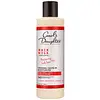What's inside
What's inside
 Key Ingredients
Key Ingredients

 Benefits
Benefits

 Concerns
Concerns

 Ingredients Side-by-side
Ingredients Side-by-side

Water
Skin ConditioningGlycine Soja Oil
EmollientPrunus Amygdalus Dulcis Oil
Skin ConditioningTheobroma Cacao Seed Butter
EmollientButyrospermum Parkii Butter
Skin ConditioningCetearyl Alcohol
EmollientGlycerin
HumectantParfum
MaskingPolysorbate 60
EmulsifyingAgave Tequilana Stem Extract
Ascorbyl Palmitate
AntioxidantAscorbic Acid
AntioxidantBeeswax
Emulsion StabilisingPentaerythrityl Tetra-Di-T-Butyl Hydroxyhydrocinnamate
AntioxidantPolysorbate 80
EmulsifyingPrunus Armeniaca Kernel Oil
MaskingSimmondsia Chinensis Seed Oil
EmollientTocopherol
AntioxidantTriticum Vulgare Germ Oil
EmollientXanthan Gum
EmulsifyingMethylisothiazolinone
PreservativePhenoxyethanol
PreservativeWater, Glycine Soja Oil, Prunus Amygdalus Dulcis Oil, Theobroma Cacao Seed Butter, Butyrospermum Parkii Butter, Cetearyl Alcohol, Glycerin, Parfum, Polysorbate 60, Agave Tequilana Stem Extract, Ascorbyl Palmitate, Ascorbic Acid, Beeswax, Pentaerythrityl Tetra-Di-T-Butyl Hydroxyhydrocinnamate, Polysorbate 80, Prunus Armeniaca Kernel Oil, Simmondsia Chinensis Seed Oil, Tocopherol, Triticum Vulgare Germ Oil, Xanthan Gum, Methylisothiazolinone, Phenoxyethanol
Water
Skin ConditioningCocos Nucifera Oil
MaskingCarthamus Tinctorius Seed Oil
MaskingRicinus Communis Seed Oil
MaskingPetrolatum
EmollientSorbitol
HumectantCyclopentasiloxane
EmollientCetearyl Alcohol
EmollientDimethicone
EmollientGlyceryl Stearate Se
EmulsifyingPPG-3 Benzyl Ether Myristate
EmollientOlea Europaea Fruit Oil
MaskingCarbomer
Emulsion StabilisingSodium Cetearyl Sulfate
CleansingStearic Acid
CleansingAminomethyl Propanol
BufferingDisodium EDTA
BHT
AntioxidantPhenoxyethanol
PreservativeBenzoic Acid
MaskingEthylhexylglycerin
Skin ConditioningGlycereth-2 Cocoate
EmulsifyingParfum
MaskingAlpha-Isomethyl Ionone
PerfumingBenzyl Alcohol
PerfumingBenzyl Salicylate
PerfumingButylphenyl Methylpropional
PerfumingGeraniol
PerfumingHexyl Cinnamal
PerfumingHydroxyisohexyl 3-Cyclohexene Carboxaldehyde
MaskingLimonene
PerfumingLinalool
PerfumingCI 42090
Cosmetic ColorantCI 19140
Cosmetic ColorantWater, Cocos Nucifera Oil, Carthamus Tinctorius Seed Oil, Ricinus Communis Seed Oil, Petrolatum, Sorbitol, Cyclopentasiloxane, Cetearyl Alcohol, Dimethicone, Glyceryl Stearate Se, PPG-3 Benzyl Ether Myristate, Olea Europaea Fruit Oil, Carbomer, Sodium Cetearyl Sulfate, Stearic Acid, Aminomethyl Propanol, Disodium EDTA, BHT, Phenoxyethanol, Benzoic Acid, Ethylhexylglycerin, Glycereth-2 Cocoate, Parfum, Alpha-Isomethyl Ionone, Benzyl Alcohol, Benzyl Salicylate, Butylphenyl Methylpropional, Geraniol, Hexyl Cinnamal, Hydroxyisohexyl 3-Cyclohexene Carboxaldehyde, Limonene, Linalool, CI 42090, CI 19140
Ingredients Explained
These ingredients are found in both products.
Ingredients higher up in an ingredient list are typically present in a larger amount.
Cetearyl alcohol is a mixture of two fatty alcohols: cetyl alcohol and stearyl alcohol. It is mainly used as an emulsifier. Emulsifiers help prevent the separation of oils and products. Due to its composition, it can also be used to thicken a product or help create foam.
Cetearyl alcohol is an emollient. Emollients help soothe and hydrate the skin by trapping moisture.
Studies show Cetearyl alcohol is non-toxic and non-irritating. The FDA allows products labeled "alcohol-free" to have fatty alcohols.
This ingredient is usually derived from plant oils such as palm, vegetable, or coconut oils. There is debate on whether this ingredient will cause acne.
Due to the fatty acid base, this ingredient may not be Malassezia folliculitis safe.
Learn more about Cetearyl AlcoholParfum is a catch-all term for an ingredient or more that is used to give a scent to products.
Also called "fragrance", this ingredient can be a blend of hundreds of chemicals or plant oils. This means every product with "fragrance" or "parfum" in the ingredients list is a different mixture.
For instance, Habanolide is a proprietary trade name for a specific aroma chemical. When used as a fragrance ingredient in cosmetics, most aroma chemicals fall under the broad labeling category of “FRAGRANCE” or “PARFUM” according to EU and US regulations.
The term 'parfum' or 'fragrance' is not regulated in many countries. In many cases, it is up to the brand to define this term.
For instance, many brands choose to label themselves as "fragrance-free" because they are not using synthetic fragrances. However, their products may still contain ingredients such as essential oils that are considered a fragrance by INCI standards.
One example is Calendula flower extract. Calendula is an essential oil that still imparts a scent or 'fragrance'.
Depending on the blend, the ingredients in the mixture can cause allergies and sensitivities on the skin. Some ingredients that are known EU allergens include linalool and citronellol.
Parfum can also be used to mask or cover an unpleasant scent.
The bottom line is: not all fragrances/parfum/ingredients are created equally. If you are worried about fragrances, we recommend taking a closer look at an ingredient. And of course, we always recommend speaking with a professional.
Learn more about ParfumPhenoxyethanol is a preservative that has germicide, antimicrobial, and aromatic properties. Studies show that phenoxyethanol can prevent microbial growth. By itself, it has a scent that is similar to that of a rose.
It's often used in formulations along with Caprylyl Glycol to preserve the shelf life of products.
Water. It's the most common cosmetic ingredient of all. You'll usually see it at the top of ingredient lists, meaning that it makes up the largest part of the product.
So why is it so popular? Water most often acts as a solvent - this means that it helps dissolve other ingredients into the formulation.
You'll also recognize water as that liquid we all need to stay alive. If you see this, drink a glass of water. Stay hydrated!
Learn more about Water